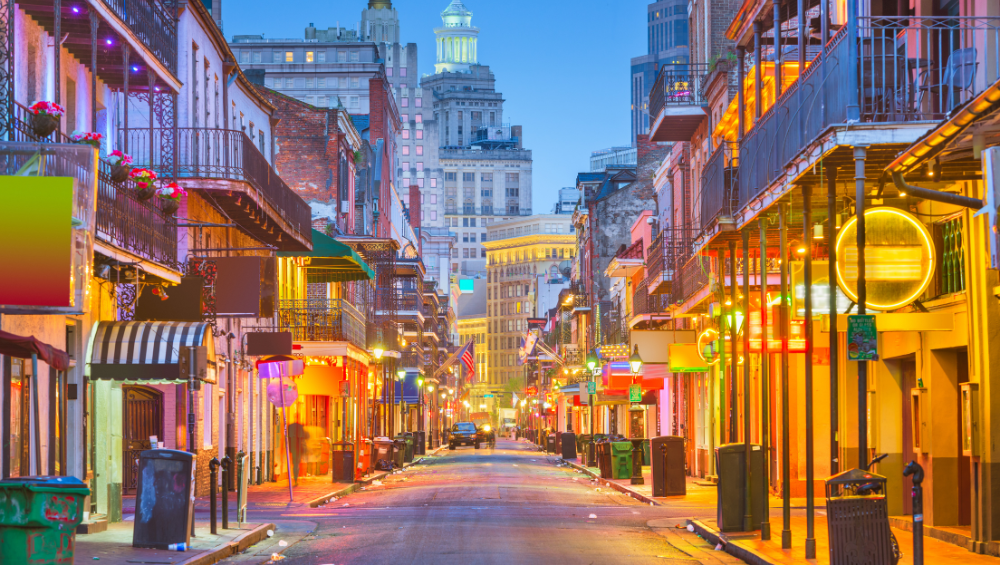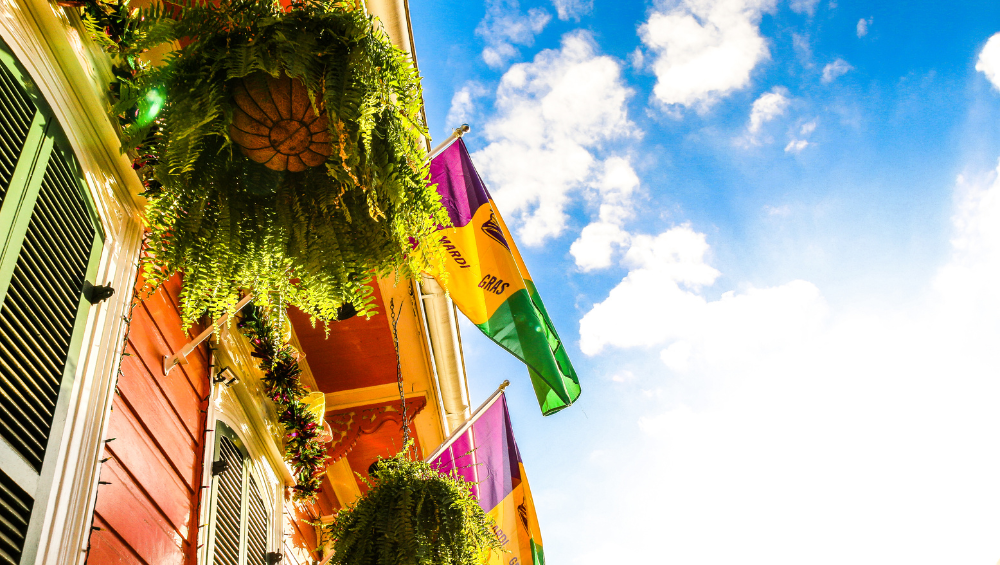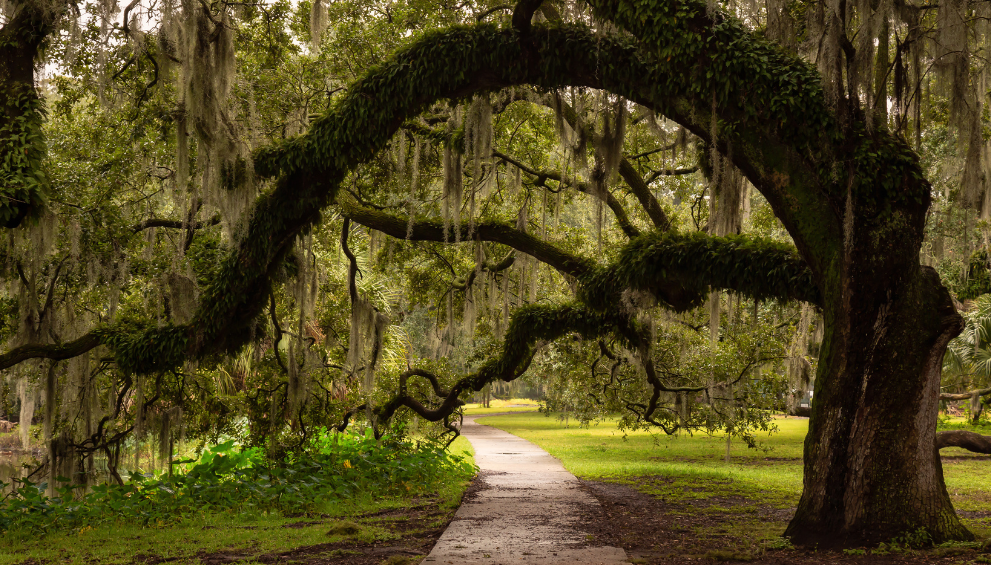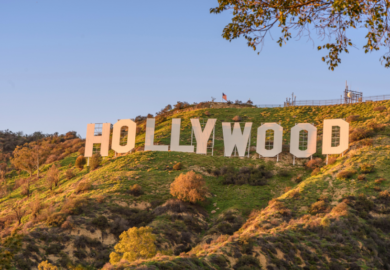Table of Contents
Are you itching for a trip to New Orleans? From the rhythm and blues of live music to the culinary delights, there’s something for everyone in the Big Easy stewing in Southern culture. Winding your way through a night out on Bourbon Street or chasing alligators through City Park – it’s no wonder why so many people flock here year after year.
10 Reasons to Visit New Orleans
1. Food
New Orleans is famous for its food and for good reason. The city is home to a unique blend of Creole and Cajun cuisine that you won’t find anywhere else in the world. From gumbo and jambalaya to beignets and po’boys, there’s something for everyone to enjoy in New Orleans.
2. Music
New Orleans is also known as the birthplace of Jazz, and the city’s music scene is truly second to none. Whether you’re looking to listen to some live Jazz in one of the many clubs or bars, or you want to catch a brass band parade, you’ll be able to find it all in New Orleans.
3. Architecture
The architecture in New Orleans is unlike anything else you’ll see in the United States. The city is home to a mix of French, Spanish, and American influences, all of which are on display in the beautiful buildings throughout the city.
4. History
New Orleans is a city with a long and rich history. From the French Quarter to Congo Square, there are countless historical sites and landmarks to explore. If you’re a history buff, you’ll definitely want to add New Orleans to your list of places to visit.
5. Mardi Gras
Mardi Gras is perhaps the most well-known event associated with New Orleans, and it’s definitely a sight to behold. If you’re looking for a party atmosphere complete with parades, costumes, and beads, then Mardi Gras is the event for you. Just be sure to book your trip well in advance, as hotels fill up fast during this time of year.
6. French Quarter
The French Quarter is the oldest neighborhood in New Orleans, and it’s definitely worth a visit. With its cobblestone streets and wrought iron balconies, the French Quarter exudes old-world charm. Be sure to check out Jackson Square and Bourbon Street while you’re here.
7. Mississippi River
No trip to New Orleans would be complete without a visit to the Mississippi River. You can take a riverboat cruise or simply walk along the levee to get a great view of the river. Either way, it’s definitely worth taking some time to appreciate this iconic body of water.
8. City Park
City Park is one of the largest urban parks in the United States, and it’s definitely worth a visit when you’re in New Orleans. With over 1,300 acres of land, City Park has something for everyone – from museums and sculptures to golf courses and tennis courts. There’s also an amazing botanical garden that’s definitely worth checking out.
9. Weather
The weather in New Orleans is pretty much perfect year-round – especially if you don’t mind a little humidity! Temperatures typically range from the mid-60s in winter to the low-90s in summer, so no matter when you visit you’ll be able to enjoy all that New Orleans has to offer without feeling too hot or too cold.
10 . People
Last but not least, one of the best things about New Orleans is its people. The locals here are some of the friendliest you’ll ever meet – they love their city and they love sharing it with visitors from all over the world.

History of French New Orleans
New Orleans was founded in 1718 by Jean-Baptiste Le Moyne de Bienville, a Frenchman who named the city after Philippe II, Duke of Orléans. From its beginnings as a French colony, New Orleans grew into an important port city and was one of the first cities to be integrated into what is now the United States. It has been through a number of wars, natural disasters, and political upheavals throughout its history, all of which have shaped the city into what it is today.
From 1763 to 1803 New Orleans was part of Spanish Louisiana, before being sold to the United States as part of the Louisiana Purchase in 1803. In 1861, New Orleans became a Confederate stronghold during the American Civil War, before falling to Union forces in 1862. Reconstruction of the city began shortly after and continued until 1877.
In the early 1900s, New Orleans developed into an important port city and center of commerce for the entire Gulf Coast region. The city was devastated by Hurricane Katrina in 2005 but has since been rebuilt with a focus on sustainability and resilience. Today, New Orleans is one of the most vibrant and unique cities in the world and welcomes visitors from all over to experience its rich culture and history. Whether you’re looking for music, food, art, or architecture – there’s something for everyone in the Big Easy!
Difference Between Cajun & Creole
Cajun cuisine is the traditional provincial cooking of the Cajuns, who are descendants of French-speaking settlers from Acadia in Canada. It is usually spicier than Creole food and has a distinct deep-fried flavor that comes from using seafood, pork, beef, and poultry as bases for stews and sauces.
Creole cuisine, on the other hand, is a mix of French, Spanish, African, and Native American influences that originated in the New Orleans area. It often features bold flavors and combines elements from all four cultures into one dish. Common ingredients include tomatoes, bell peppers, onions, garlic, and okra.
Both Cajun and Creole cuisines are staples of New Orleans and can be found throughout the city in restaurants, cafes, and markets. Whether you’re looking for a spicy bowl of gumbo or a classic po’boy sandwich, you won’t have any trouble finding something delicious to eat in New Orleans!
New Orleans Cuisine
New Orleans cuisine is known around the world for its unique and flavorful take on classic Southern dishes. From Creole jambalaya to Cajun gumbo, there are endless options to satisfy any palate in the Big Easy.
Famous dishes found throughout New Orleans include red beans and rice (a hearty dish made of red beans, sausage, and vegetables), shrimp and grits (a creamy, savory combination of shrimp and cheese grits), beignets (square donuts dusted with powdered sugar) and po’boys (sandwiches packed with fried seafood or roast beef).
Voodoo in New Orleans
Voodoo has been a part of New Orleans culture for centuries, and it’s still an important aspect of life in the city today. The practice of voodoo is a blending of religious practices from West Africa with influences from Europe and Native American cultures. It includes rituals, ceremonies, and beliefs that are used to communicate with spirits and to heal the sick.
Today, voodoo can be found throughout New Orleans in shops selling ritual items like candles, herbs, dolls, and fetishes; in traditional “voodoo tours” that take visitors to historically significant sites related to the religion; and in spiritual centers offering classes on voodoo practices. Though there is still some misunderstanding about this fascinating culture, many locals continue to embrace voodoo as an integral part of their identity and history.
The unique culture is shaped by a mix of French, Spanish, African, and Native American influences that make it unlike any other city in the world. From exploring the lively streets of the French Quarter to taking a riverboat cruise on the Mississippi River – there are plenty of ways to soak up all that the Big Easy has to offer.

History of Jazz and Blues in the Big Easy
When you think of New Orleans, you can’t help but think of jazz and blues music. The city has long been known as the birthplace of these two genres, with iconic musicians like Louis Armstrong and Jelly Roll Morton creating their own unique sounds in the early 1900s.
The influence of jazz and blues on New Orleans culture is undeniable – from street performers playing traditional songs to local bars hosting live music every night. Even today, visitors to the Big Easy can experience the rich history of jazz and blues by attending a concert at one of the many venues throughout the city or simply walking around town and listening to spontaneous jam sessions on corners.

Best of New Orleans
New Orleans is a vibrant city with plenty to explore. Whether you’re looking for cultural experiences, festivals and events, music, food, or outdoor activities there are endless things to do. For culture and history buffs, take a trip to the French Quarter or visit one of the many world-class museums in the area. Music lovers should head to Bourbon Street for live jazz and blues, while foodies should check out some of the city’s famous restaurants.
Those looking for outdoor experiences can take a walk along the Mississippi River or explore City Park – one of the largest parks in the United States. No matter what you’re interested in, there is something for everyone
6 Best Things to See in New Orleans
1. The French Quarter
The French Quarter is the oldest and most historic neighborhood in New Orleans. The area is known for its beautiful architecture, cobblestone streets, and wrought iron balconies. Visitors to the French Quarter can enjoy a variety of activities, including shopping, dining, and live music.
2. Jackson Square
Jackson Square is a public park located in the French Quarter. The square is named after General Andrew Jackson, who defeated the British in the Battle of New Orleans during the War of 1812. Today, the square is a popular gathering place for locals and tourists alike. Visitors can enjoy a variety of activities in the park, including people-watching, art viewing, and live music.
3. St. Louis Cathedral
St. Louis Cathedral is the oldest cathedral in the United States and is located in Jackson Square. The cathedral is known for its beautiful architecture and stunning stained glass windows. Visitors can take a tour of the cathedral or attend mass.
4. The National WWII Museum
The National WWII Museum is one of the most popular museums in New Orleans. The museum tells the story of the American experience during World War II through interactive exhibits, artifacts, and first-person accounts. Visitors can also watch a movie in the museum’s 4D theater or take a boat ride through a replica of the D-Day landing at Normandy Beach.
5. Mardi Gras World
Mardi Gras World is a tourist attraction that offers visitors a behind-the-scenes look at how Mardi Gras floats are made. The attraction includes a guided tour of the float-building facilities as well as an opportunity to see artisans working on floats for upcoming parades. Visitors can also purchase souvenirs at the on-site gift shop.
6. The Audubon Zoo
The Audubon Zoo is one of the best zoos in the country and is located just outside of New Orleans in nearby Kenner, Louisiana. The zoo features a variety of animals, including lions, tigers, giraffes, and elephants. Visitors can also take part in educational programs, such as animal feedings and behind-the-scenes tours
5 Best Places to Eat in the Big Easy
1. Domenica
Domenica is a popular Italian restaurant located in New Orleans, Louisiana. The restaurant is known for its wood-fired pizzas and homemade pasta. Domenica also offers a variety of other Italian dishes, including starters, salads, and entrees.
2. Sazerac House
Sazerac House is a New Orleans institution that has been serving Creole cuisine since the early 1800s. The restaurant is best known for its shrimp and grits, but it also offers a variety of other Louisiana classics, such as gumbo and jambalaya.
3. Antoine’s Restaurant
Antoine’s Restaurant is another New Orleans institution that has been serving French Creole cuisine since 1840. The restaurant is best known for its oysters Rockefeller, but it also offers a variety of other seafood dishes, as well as meat and vegetarian options.
4. Cochon Butcher
Cochon Butcher is a popular sandwich shop located in New Orleans, Louisiana. The shop is known for its sandwiches made with locally sourced meats and cheeses. Cochon Butcher also offers a variety of side dishes, including salads and soups.
5. Willa Jean
Willa Jean is a popular bakery located in New Orleans, Louisiana. The bakery is known for its fresh-baked bread and pastries. Willa Jean also offers a variety of breakfast and lunch items, including sandwiches, salads, and soups.
No matter what type of cuisine you’re craving in New Orleans, there is something to satisfy everyone! From Creole to Cajun and Italian to French, the Big Easy has a wide variety of restaurants, cafes, and bakeries that offer up some of the best food around.
7 Best Places for Nightlife in the Big Easy
1. Bourbon Street
Bourbon Street is the most famous street in New Orleans and is known for its lively nightlife. The street is lined with bars, clubs, and restaurants, and is a popular destination for tourists and locals alike.
2. Frenchman Street
Frenchman Street is located in the Faubourg Marigny neighborhood of New Orleans and is known for its live music scene. The street is home to a number of music venues, including the world-famous Blue Nile nightclub.
3. The Warehouse District
The Warehouse District is located in downtown New Orleans and is known for its trendy bars and clubs. The area is also home to a number of art galleries and restaurants.
4. Uptown New Orleans
Uptown New Orleans is a historic neighborhood that is known for its lively nightlife scene. The area is home to a number of bars, clubs, and music venues, as well as some of the city’s best restaurants.
5. Mid-City New Orleans
Mid-City New Orleans is a vibrant neighborhood that is known for its eclectic mix of bars and clubs. The area is also home to some of the city’s best restaurants, cafes, and shops.
6. Bywater New Orleans
Bywater New Orleans is a historic neighborhood that has become known in recent years for its hipster bars and clubs. The area is also home to some of the city’s best coffee shops and bakeries.
7. Marigny New Orleans
Marigny New Orleans is a historic neighborhood that is known for its bohemian atmosphere and lively nightlife scene. The area is home to a number of bars, clubs, and music venues, as well as some of the city’s best restaurants
5 Best Hotels in New Orleans
1. The Roosevelt New Orleans, A Waldorf Astoria Hotel
The Roosevelt New Orleans, A Waldorf Astoria Hotel is located in the heart of the historic French Quarter. The hotel features a luxurious spa, an outdoor pool, and a fitness center. Guests can enjoy dining at one of the hotel’s five restaurants or relaxing in their spacious accommodations.
2. The Ritz-Carlton, New Orleans
The Ritz-Carlton, New Orleans is located in the French Quarter, just steps from Bourbon Street. The hotel features a world-class spa, an outdoor pool, and a fitness center. Guests can enjoy dining at one of the hotel’s five restaurants or relaxing in their spacious accommodations.
3. Omni Royal Orleans Hotel
The Omni Royal Orleans Hotel is located in the heart of the French Quarter. The hotel features an outdoor pool, a fitness center, and a business center. Guests can enjoy dining at one of the hotel’s four restaurants or relax in their spacious accommodations.
4. JW Marriott New Orleans
The JW Marriott New Orleans is located in the heart of downtown New Orleans. The hotel features an outdoor pool, a fitness center, and a business center. Guests can enjoy dining at one of the hotel’s six restaurants or relax in their spacious accommodations.
5. Hilton New Orleans Riverside
The Hilton New Orleans Riverside is located on the banks of the Mississippi River in downtown New Orleans. The hotel features an outdoor pool, a fitness center, and a business center. Guests can enjoy dining at one of the hotel’s seven restaurants or relax in their spacious accommodations.
Best Day Trips from New Orleans
Why Visit New Orleans
New Orleans is a vibrant city that shouldn’t be missed on any traveler’s itinerary. Not only is it filled with beautiful architecture, lively music, and delicious food, but it also has a rich history and a unique culture. Whether you’re interested in exploring historic sites like the French Quarter and St. Louis Cathedral or listening to jazz music at Preservation Hall, there’s something for everyone in this Louisiana city. And let’s not forget about the famous Mardi Gras celebrations, where the streets come alive with colorful parades and lively festivities.
Visiting New Orleans FAQs
New Orleans is a city full of character, charm, and rich culture – something that can only truly be experienced by visiting the city firsthand. From the legendary Mardi Gras festivities to its wide array of attractions from art galleries to historical sites, it’s no wonder New Orleans draws visitors from near and far.
These commonly asked questions are meant to provide an initial insight into what one should expect when visiting this vibrant destination. Ultimately, New Orleans has something to offer every one and anyone who loves culture, great food, a fun-filled atmosphere, and exploring new places – regardless of their budget or preferences.
When is the best time to visit New Orleans?
The best time to visit New Orleans is during the spring (February to May) and fall (September to November) when the weather is mild and there are many festivals and events taking place. However, be aware that the city can be crowded during major events like Mardi Gras. Summers can be hot and humid, while winters are generally mild but can experience occasional cold snaps.
What are some must-visit attractions in New Orleans?
Some must-visit attractions in New Orleans include the French Quarter with its historic architecture and lively atmosphere, Bourbon Street known for its vibrant nightlife, Jackson Square with the St. Louis Cathedral, the Garden District with its beautiful mansions, the National WWII Museum, the Audubon Aquarium of the Americas, and taking a stroll along the iconic Mississippi Riverfront.
What is the food scene like in New Orleans?
New Orleans is renowned for its vibrant and diverse food scene. Be sure to try iconic dishes like gumbo, jambalaya, po’boys, beignets (fried doughnuts), crawfish étouffée, and seafood from the Gulf of Mexico. Explore the city’s famous restaurants, street food vendors, and local eateries for a true taste of New Orleans cuisine.
What is the best way to get around New Orleans?
New Orleans has a walkable and compact downtown area, particularly in the French Quarter. Walking is a great way to explore the city’s historic neighborhoods. Other transportation options include streetcars, buses, and taxis. The city also offers bike-sharing programs and rideshare services like Uber and Lyft.
Are there any safety considerations for visitors in New Orleans?
Like any major city, it’s important to be aware of your surroundings and take necessary precautions. Stick to well-lit and populated areas, avoid displaying valuable items openly, and be cautious in unfamiliar neighborhoods. It’s also advisable to keep an eye on your belongings and use reputable transportation options.
What festivals should I consider when planning my trip to New Orleans?
New Orleans is famous for its lively festivals and events. Some popular ones include Mardi Gras (usually in February or March), Jazz Fest (in April or May), French Quarter Festival (in April), and Essence Festival (in July). These events showcase the city’s rich cultural heritage and offer unique experiences for visitors.
Is there anything else I should know before visiting New Orleans?
New Orleans is known for its vibrant music scene, so be sure to catch live performances of jazz, blues, and other genres at local clubs and bars. Additionally, embrace the city’s unique cultural traditions and customs, such as second-line parades and the local “laissez les bons temps rouler” (let the good times roll) attitude. Keep an eye on the weather during hurricane season (June to November) and be prepared for possible changes to your plans.


